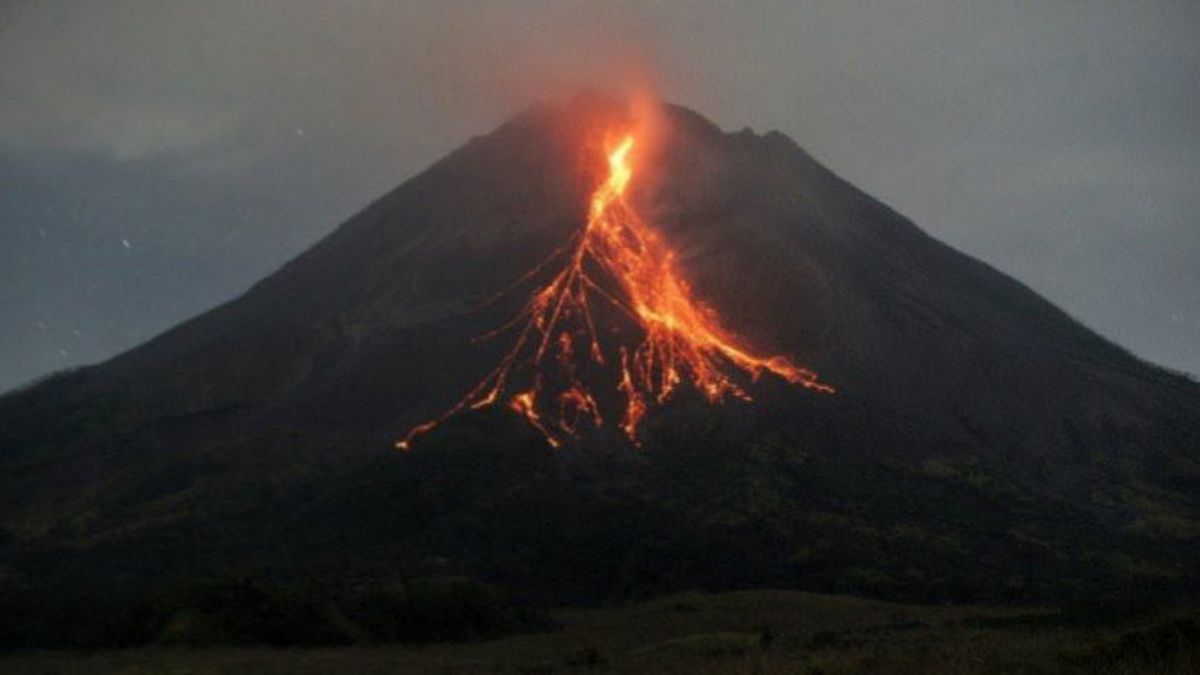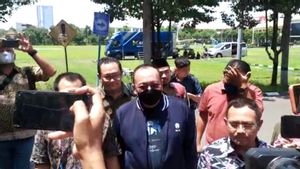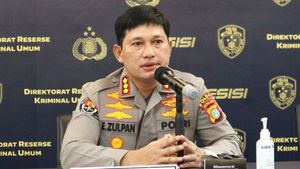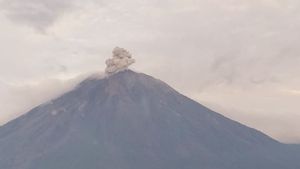JAKARTA - The Geological Disaster Technology Research and Development Center (BPPTKG) explained the phenomenon of lightning flashes striking the peak of Mount Merapi which was recorded on the volcano's seismic and CCTV stations.
On October 11, 2022, the sound of lightning was heard from the observation post of Mount Merapi and was recorded through a seismic station at around 16.34 WIB.
"The lightning phenomenon has no impact on the monitoring station and is not related to the volcanic activity of Mount Merapi", said the official statement from BPPTKG as reported by ANTARA, Wednesday, October 12.
The lightning phenomenon is one of the phenomena that occur due to extreme weather that occurs in the territory of Indonesia.
The public is advised to increase preparedness for hydrometeorological disasters and to always follow BMKG weather information and Mount Merapi activities from trusted sources.
Mount Merapi is an active volcano located in Central Java and Yogyakarta. The mountain has a status of level III or standby as of November 5, 2020.
Status level III indicates the potential for an eruption to approach the residential areas of the people closest to the mountain.
The Center for Volcanology and Geological Hazard Mitigation (PVMBG) urges people living on the slopes of Mount Merapi to comply with the map of disaster-prone areas or KRB considering that the rainy season is now entering.
VOIR éGALEMENT:
PVMBG Volcano Coordinator, Oktory Prambada, said Mount Merapi has four main factors for the formation of lahars, namely the accumulation of erupted material, rainwater, gravity, and the shape of the valley so that there is a great potential for lahars to fall.
Lahar is a secondary hazard from volcanic eruption activity in the form of deposits of eruptive material that fill the valleys that originate at the center of the eruption. The material can be in the form of lumps to ash which when mixed with water will turn into mud.
If these four factors are met, then the material that settles in the valleys of the volcano can descend to the lower reaches of the river.
Lahars can carry volcanic material in large sizes and volumes, so the damage that can be caused in valleys affected by lahars is fatal and often causes damage and loss of life.
"The dangers of active volcanic lahars have been outlined in the KRB map of volcanoes so that they can serve as guidelines for the community and regional development to reduce the impact of lahar damage", said Oktory.
The English, Chinese, Japanese, Arabic, and French versions are automatically generated by the AI. So there may still be inaccuracies in translating, please always see Indonesian as our main language. (system supported by DigitalSiber.id)











